A Historic Portrait
Duke of Wellington on Copenhagen, an imposing 19th-century oil on canvas attributed to Henry William Pickersgill (or his circle), captures the 1st Duke of Wellington mounted on his legendary warhorse, Copenhagen. Measuring over 3 meters in height, this romanticised yet stately equestrian portrait had suffered the wear of time, old restorations, and environmental exposure.
When we first met at The Army and Navy Club (known affectionately as The Rag) the painting, it was in poor to fair condition — dusty, dulled by yellowed varnish, riddled with aged retouching, and structurally compromised. Its historical and aesthetic significance demanded a careful, respectful conservation treatment.
Our Conservation Approach
This project required a collaborative effort involving two paintings and frames conservators, framers, a dedicated client liaison, and project manager and senior conservator. Here’s how we brought the Duke and Copenhagen to a new lght.
Condition Assessment
Our team conducted a full condition report, including:
- Ultraviolet fluorescence photography (UVF) to map overpainting and retouching.
- Visible and macro photography.
- Structural analysis of the canvas, stretcher, verso and framing components.
- Priority assessment and tailored treatment planning.
We identified flaking paint, old tears, surface staining (possibly from food and pollution), embedded debris, canvas distortions, and a discoloured varnish. The edge showed corroded tacking margins and trapped screws causing protrusions and paint loss. And finally, the two joint stretchers colliding with the wall fixture was changing the shape of the stretcher.
Cleaning & Stabilisation
- Dry cleaning with smoke sponges and micro-vacuums.
- Targeted varnish removal using custom solvent blends (IMS, white spirit, benzyl alcohol).
- Removal of embedded screws and bolts.
- Structural consolidation of flaking paint and lifting edges using conservation-grade adhesives (Lascaux).
- Filling losses with Flugger putty and precise retouching with Laropal A-81 + pigments and watercolours.
We also addressed distortions in the canvas using magnetic pressure and Sympatex interleaving, a non-invasive method to gently flatten deformations overnight.
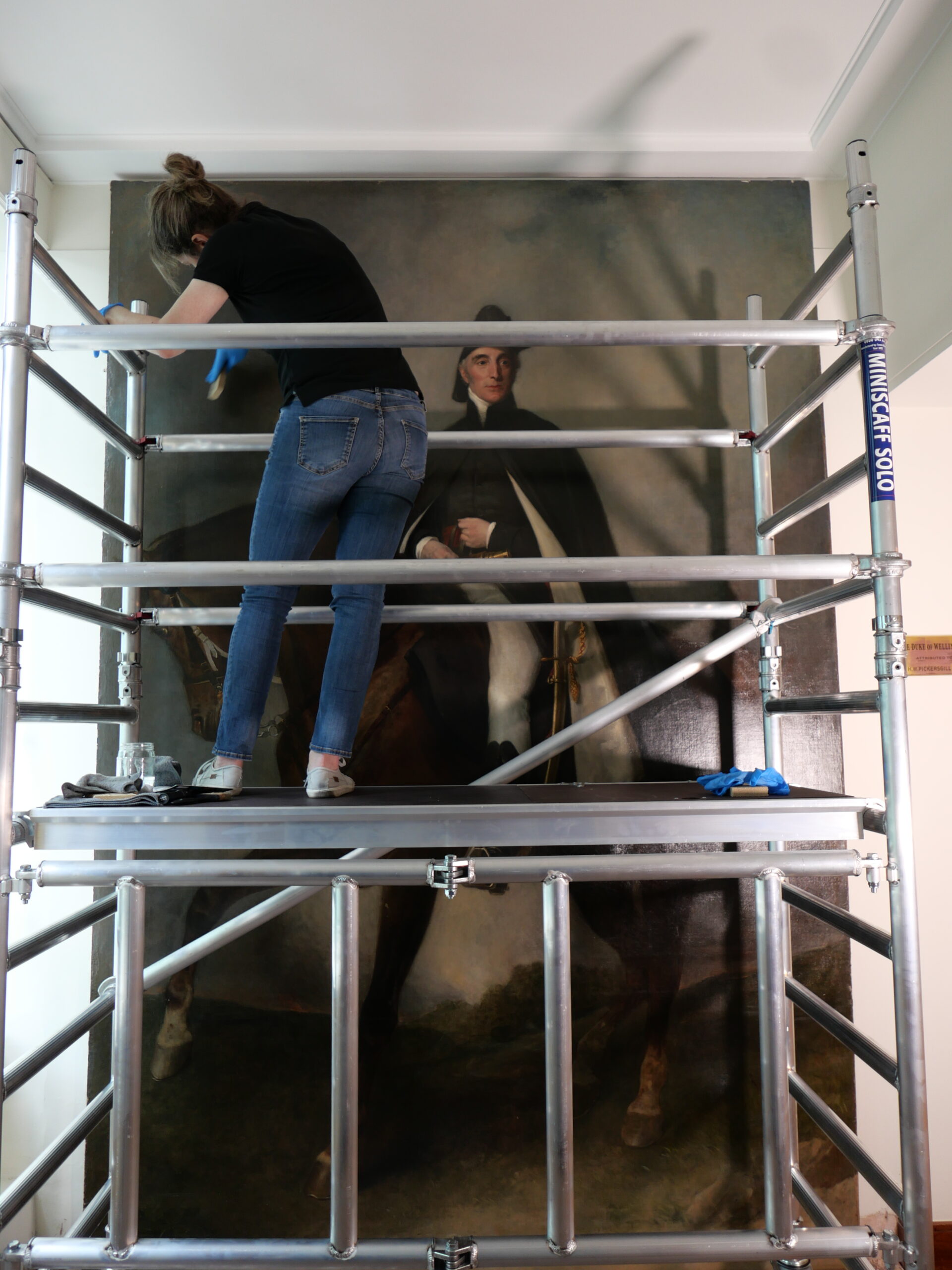
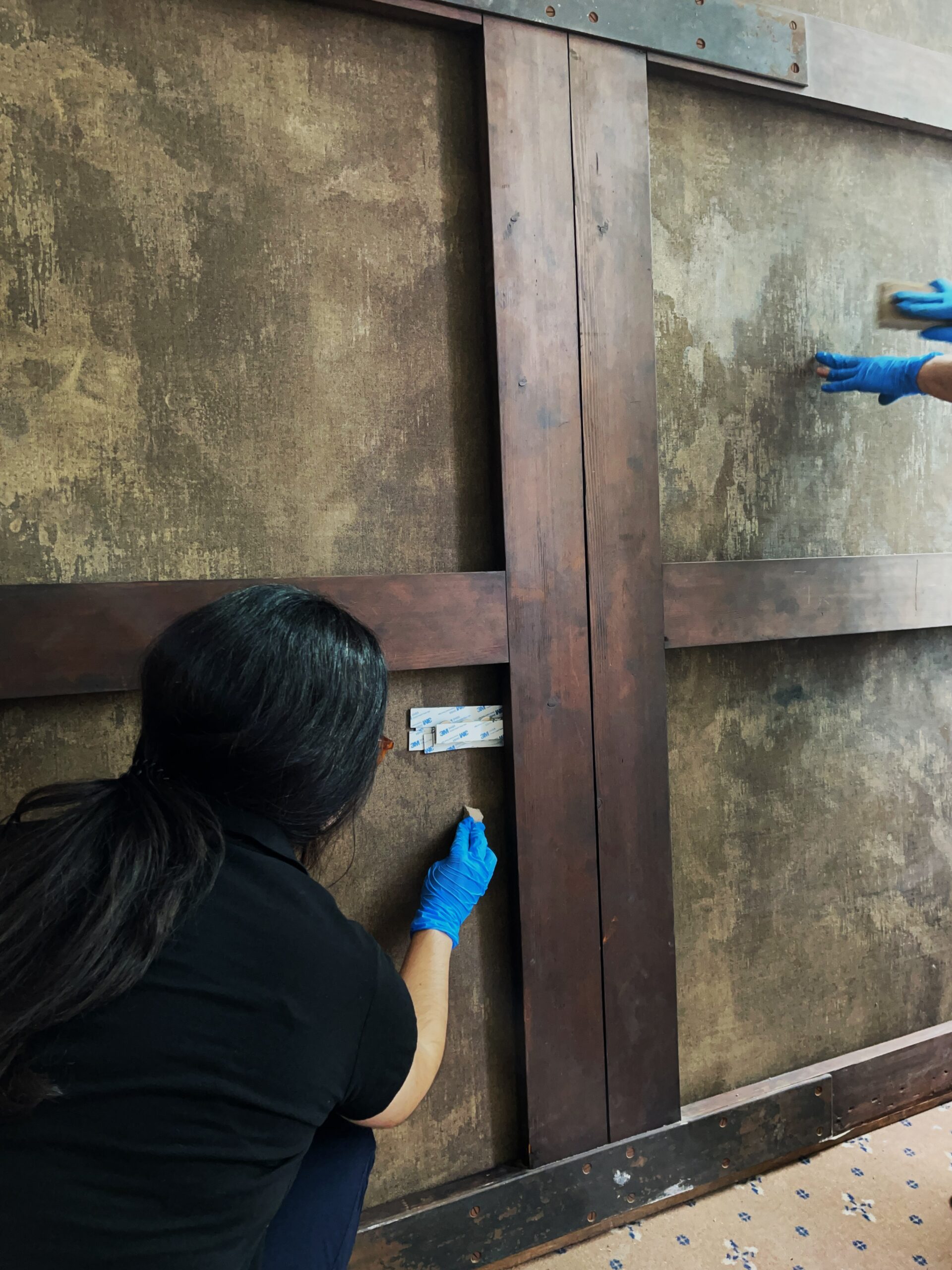
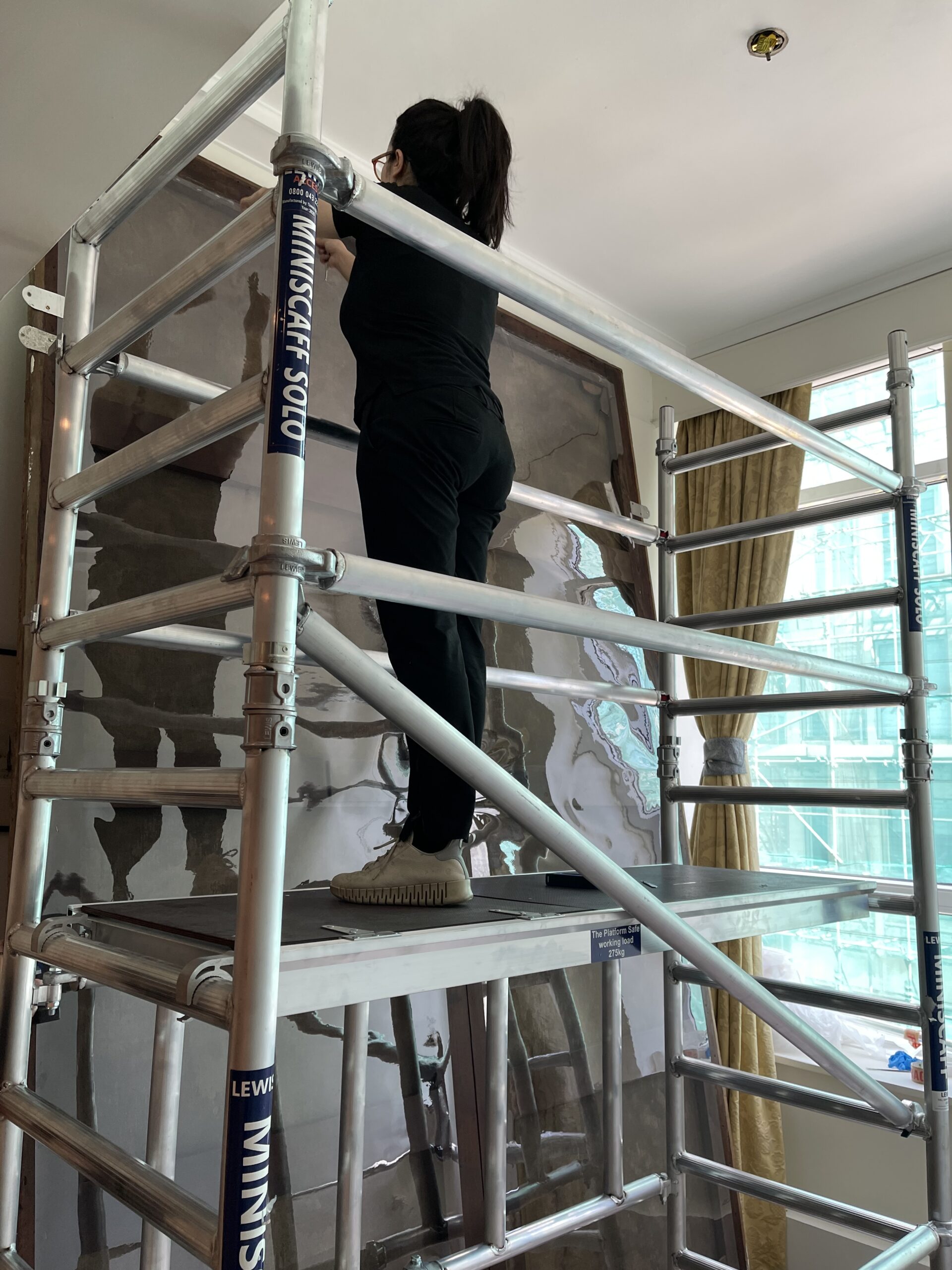
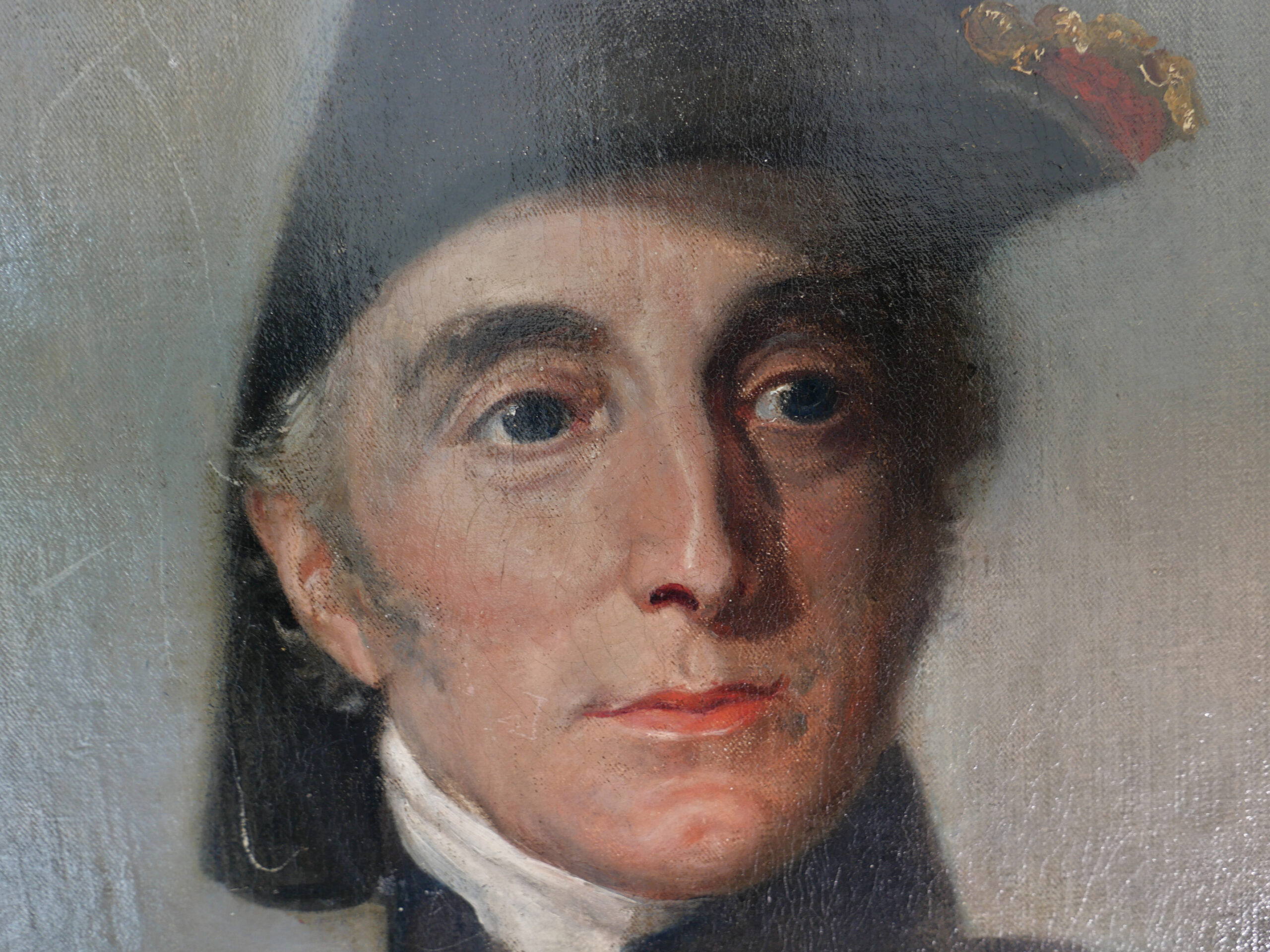
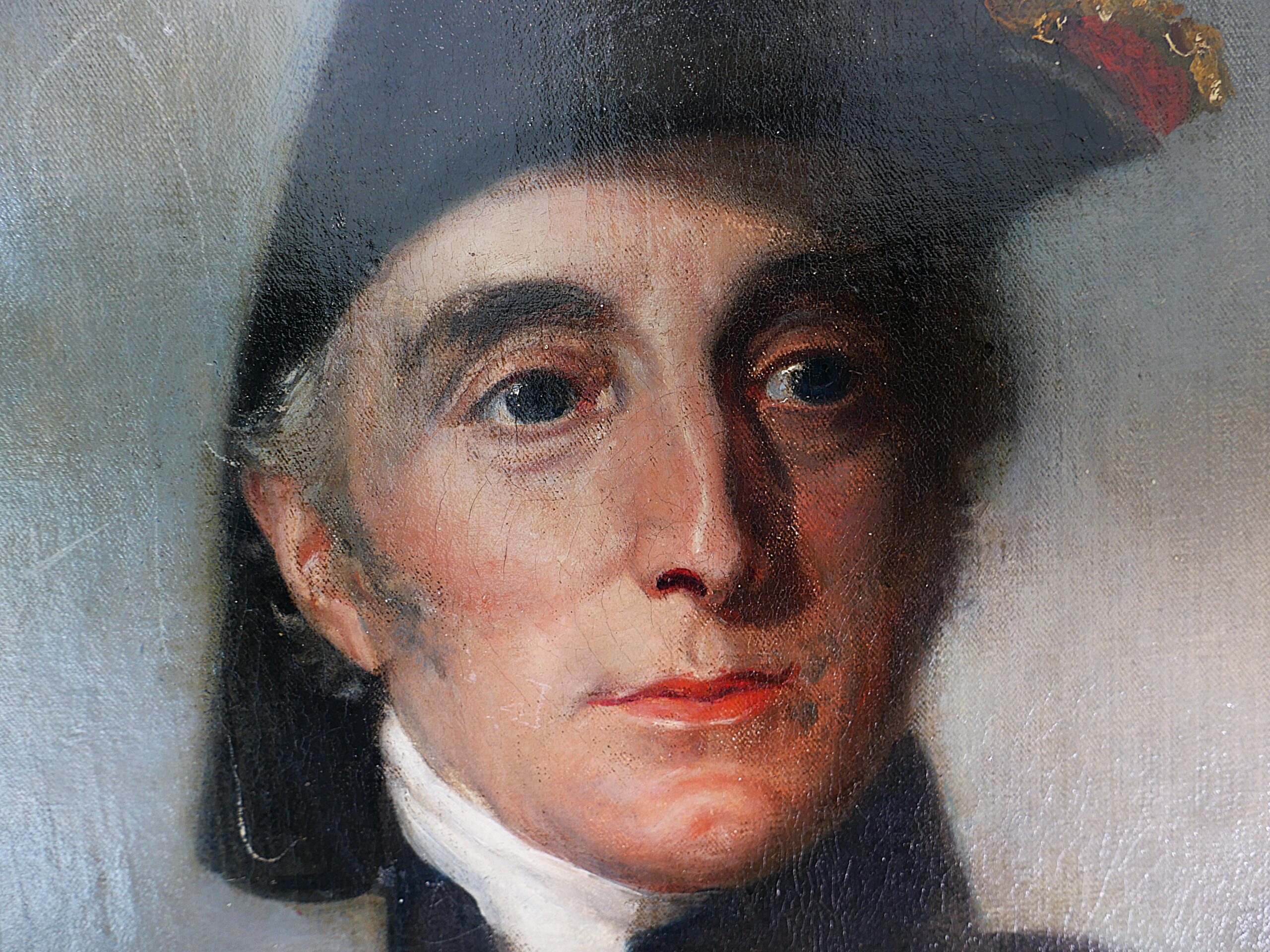
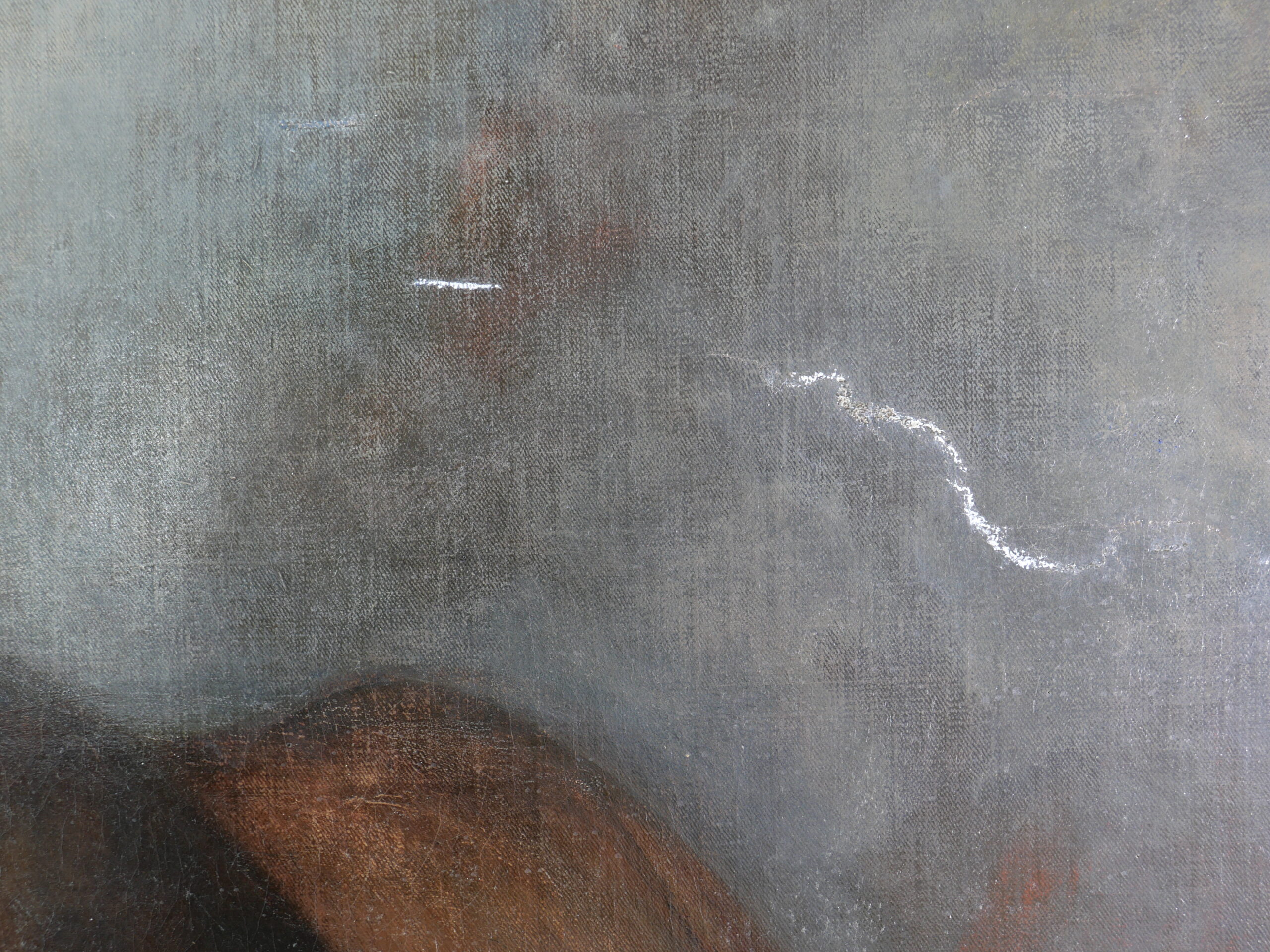
Structural & Frame Improvements
- Two structural plaques were added to the stretcher to allow the painting to rest equally in the wall.
- A 125-micron Melinex reverse protection barrier was installed to prevent dust accumulation and provide some resilience under changing environmental conditions.
- Broken keys and threads were replaced using robust conservation materials (Terko satin thread).
Custom Frame Solution
To safely support the monumental canvas, we created a two-part, U-shaped custom frame system. This allowed secure mounting using nylon webbing and stainless-steel mending plates — ensuring safety without compromising the artwork.
Before rehanging, The Army and Navy Club undertook wall preparation including repainting and electrical removal — demonstrating the collaborative nature of this installation.
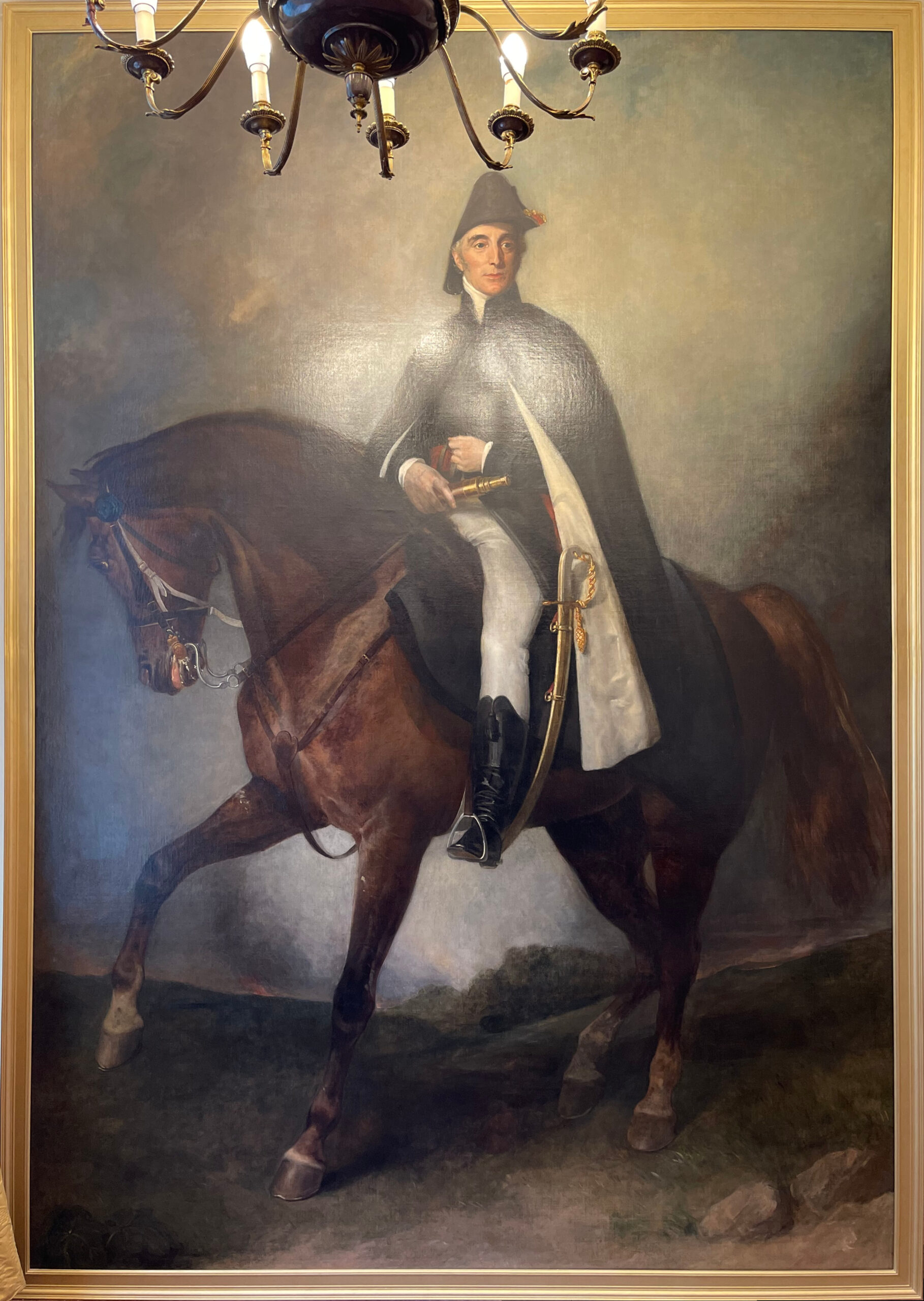
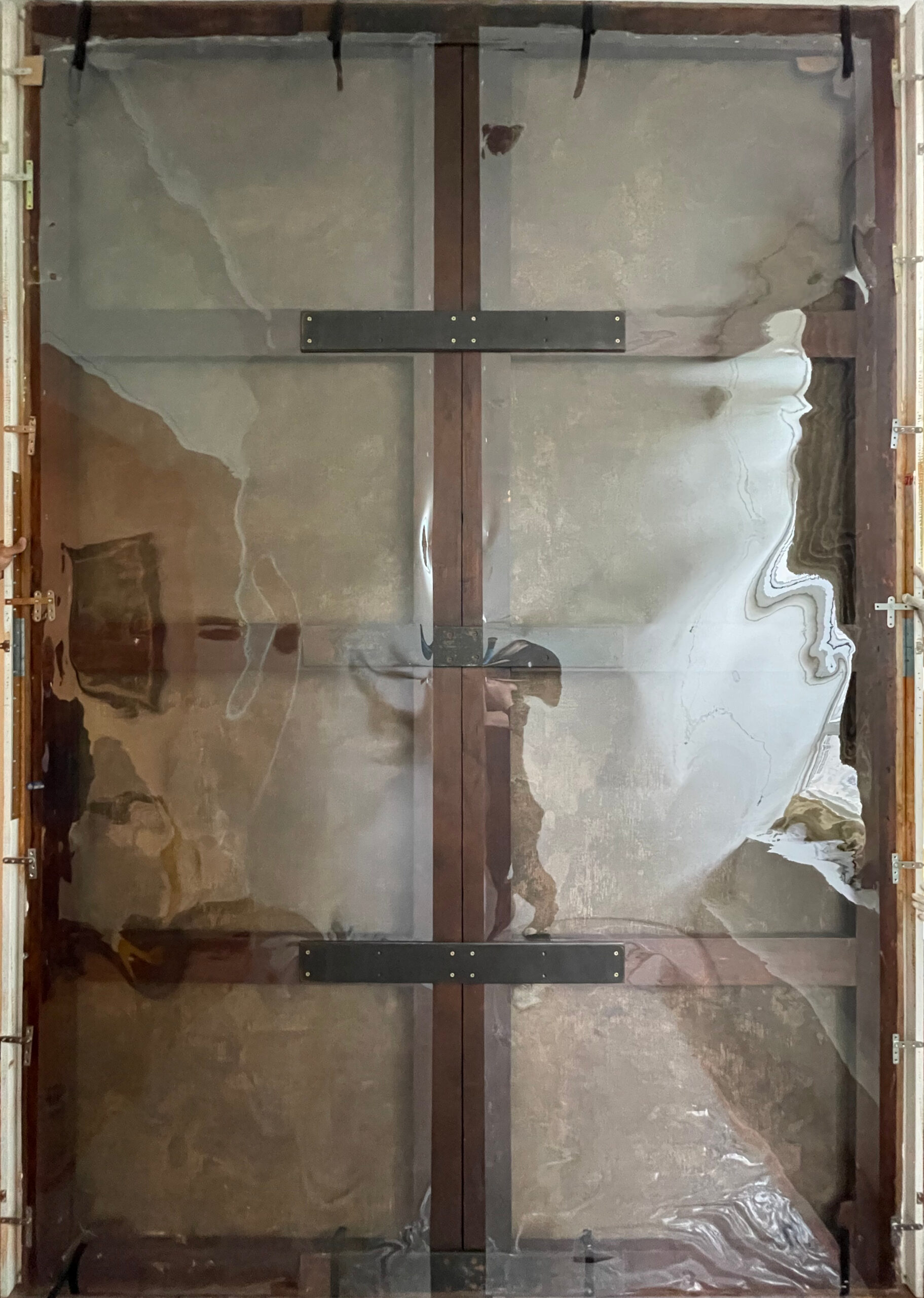
This project is a testament to the care, skill, and precision we bring to each conservation treatment. Whether working in private collections, institutions, or clubs like The Rag, we deliver:
✅ Expert, multi-specialist collaboration
✅ Detailed documentation and transparency
✅ Preventive care and long-term solutions
✅ Respect for both artistic intent and historical value
Do You Have a Painting in Need of Conservation? Whether it’s a grand historic canvas or a cherished family portrait, we offer tailored treatments to bring your artwork back to life — with the utmost respect for its story, materials, and legacy.
Contact us today for a consultation. Let’s preserve your heritage — beautifully.

